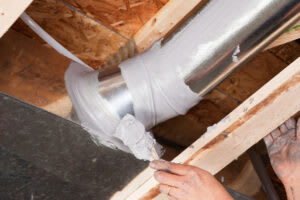 Maintaining a comfortable temperature indoors over the summer is the number one challenge Yuma residents face year-round without breaking the bank. When daily temperatures soar to 110 degrees F and higher, attic ventilation is central to cutting energy bills.
Maintaining a comfortable temperature indoors over the summer is the number one challenge Yuma residents face year-round without breaking the bank. When daily temperatures soar to 110 degrees F and higher, attic ventilation is central to cutting energy bills.
It’s not uncommon for the temperature of an attic to reach 140 degrees and higher on a hot, sunny day. Without adequate air circulation and insulation, that heat seeps into the livable areas of your home, increasing cooling bills. All building codes require a certain amount of venting in attics to keep moisture low and temperatures in line.
How to Vent the Attic
On a cool morning, inspect the vents in the attic. Look for soffit vents that you can see on the edges of the roofline, gable-end vents, or ridge vents. You’ll have to access the attic to verify that each one isn’t blocked. Sometimes insulation or boxes get pushed over the vents that restricts the airflow. Remove any blockages.
You can increase the amount of ventilation in the attic to lower temperatures indoors by installing:
An attic fan. Such a fan will bring in outside air through the vents to cool the attic off. Even though it will be in the 100s in the summer, it’s still cooler than the air in the attic. Many attics don’t have access to wiring, which makes solar attic fans a popular option
Turbines. These devices use the movement of hot air to pull it out of the attic.
Heat recovery ventilators (HRV). HRVs pull out stale air as they pull in fresh. HRVs have cores that extract the energy of the outgoing air and put it into the incoming air. An HRV is an excellent way to introduce fresh air without noticeably driving up cooling costs. They are a solution for homes with limited attic space.
Ventilation of your home makes a difference in your comfort and energy bills, but it’s not always a straightforward issue. To learn more, contact Hansberger Refrigeration and Electric Company, providing HVAC services for Yuma-area homeowners.
Our goal is to help educate our customers in Yuma, Arizona about energy and home comfort issues (specific to HVAC systems). For more information about other HVAC topics, download our free Home Comfort Guide or call us at 928-723-3183.